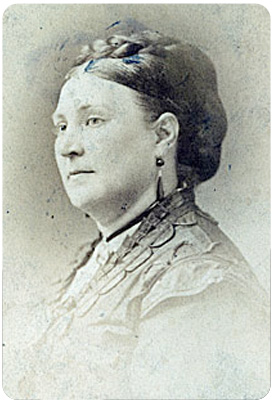 |
 |
||||||
 |
|||||||
 |
|||||||
Portrait Description Wife and mother Over a period of twenty-two years, Virginia would have thirteen children and perhaps as many as six miscarriages and still births; only three sons would live past the age of eight. In 1854, Robert and Virginia Campbell bought a house at 20 Lucas Place—then the most fashionable and elite neighborhood in St. Louis. Now 1508 Locust Street, the home would remain in the Campbell family until the last son died in 1938. Their surviving letters indicate that they supported each other in their respective roles with a great love for each other and their children. The Campbells entertained frequently in their Lucas Place home. In 1873, Virginia held a formal dinner and reception for President Ulysses S. Grant while Robert was delayed in Philadelphia on business. What is particularly notable about this is the fact that Virginia hosted the party alone. Victorian customs typically dictated that a woman did not host events without her husband. Virginia demonstrated a willingness to move beyond the bounds of convention throughout her life. She died on January 30, 1882, at the age of sixty. Challenging Her Role, Making a Difference A leader in historic preservation, Virginia was a Vice Regent for Missouri of the Mount Vernon Ladies Association between 1879 and 1882. This organization saved and preserved George Washington's Mount Vernon house and estate. Virginia's sons honored their mother's interest after she died by donating a pair of Chippendale-style mahogany stands once owned by Washington and also by supporting the recreation of Washington's deer park on the Mount Vernon estate. In many ways Virginia was unusual for a nineteenth-century upper middle class woman. She had a strong interest in national and civic affairs and she independently supported many philanthropic causes. At the same time, she fulfilled her role as spouse, partner, and mother. Virginia Campbell was a Victorian woman well ahead of her time. |
|
||||||
| About Us | Partners | Press Room | Donate | Site Map | Contact ©2010 Urban Museum Collaborative |
|||||||
